What Everyone’s Missing About Angela—the Standing Sun Bear at a Zoo in China
Why are viewers baffled—for the wrong reason—by a viral video showing a standing sun bear at a Chinese zoo? They’re so concerned about whether the exploited bear is real or a disguised human that they’ve completely missed the deeper problem behind the scenes: The abuse of bears in entertainment is speciesist and cruel—and it must be stopped.
The Alleged Abuse Endured by Angela, the Sun Bear at a Chinese Zoo
The petite Malayan sun bear receiving so much attention is named Angela. She’s a living, feeling being, but humans have subverted her natural autonomy and very likely forced her, through painful training, to stand on her hind legs for long hours every day. Seedy circus trainers dump many sun bears like Angela at zoos in China after years of agonizing abuse. And it isn’t just China: The same circus-training torment and eventual handover to zoos occur internationally.
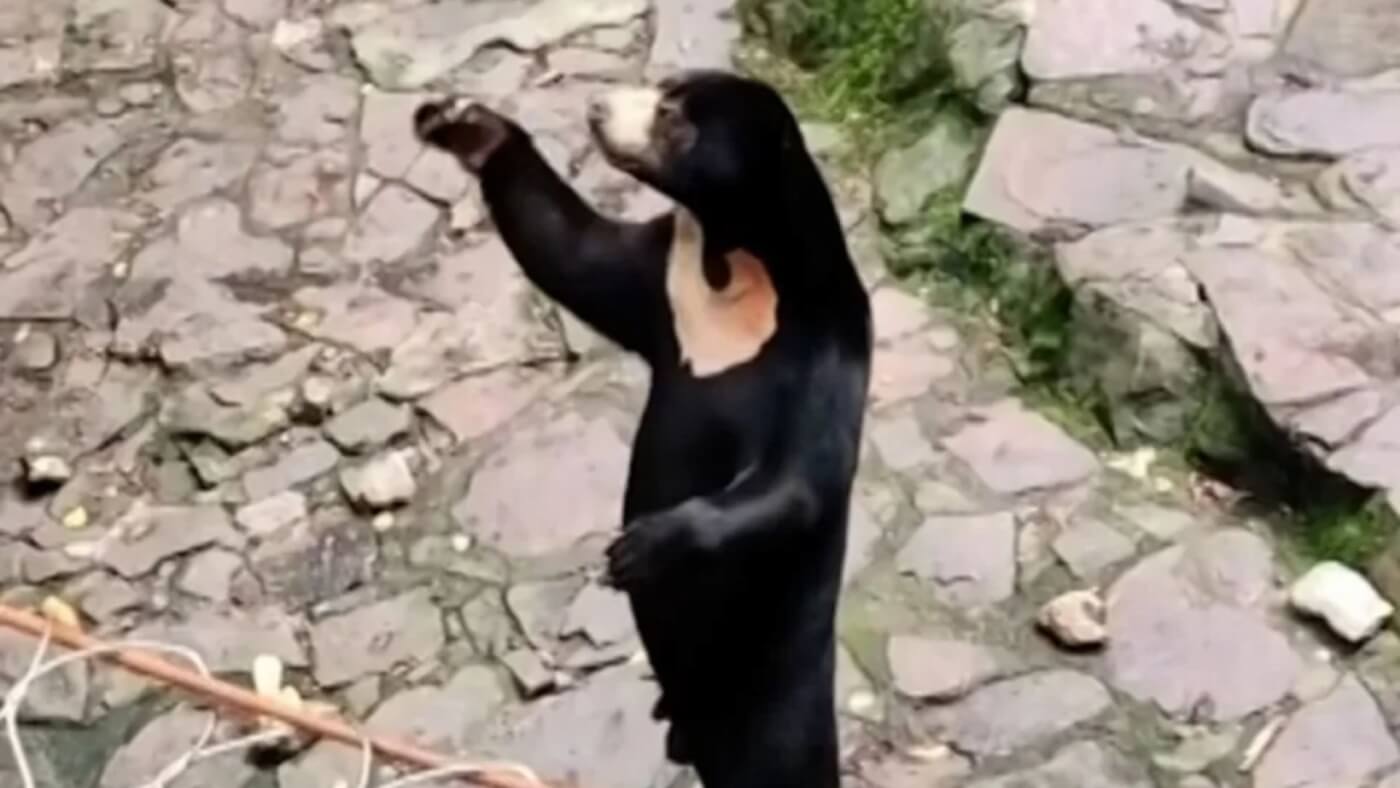
Although Angela appeared to wave at visitors while standing, the gesture and posture more likely suggest bodily distortion from a life of crammed confinement. Rather than persistent and uninformed online speculation about whether Angela is “fake,” the conversation should shift to exposing the abuse of bears like her who are exploited for entertainment in China and around the globe.
After the video went viral, Hangzhou Zoo began denying social-media rumors that Angela was a costumed human at the end of July. The zoo is now reportedly attracting about 20,000 spectators each day who crowd around Angela’s enclosure to gawk and wonder—all the while ignoring the cruelty she has endured and doing nothing to end it.
PETA knows this zoo takes in animals formerly used by circuses. When bears are no longer useful to the circus industry across the globe—often because they have become older and more aggressive—they’re discarded at shoddy zoos. Angela very likely used to be forced to perform circus tricks. Trainers probably compelled her to learn to stand, a common form of exploitation in circuses worldwide.
Sun bears, who are native to Southeast Asia’s tropical forests, are the world’s smallest bear species. They sport amber-colored fur patches shaped like crescents on their chests. They also have long tongues, which are useful for extracting honey from beehives.
The International Union for Conservation of Nature lists sun bears as “vulnerable,” and the bears’ mother country, Malaysia, deems them a protected species. Yet poachers and deforestation threaten their wild population, which has fallen by 35% over the past 30 years.
What Lies Behind Many Sun Bears Dumped at Chinese Zoos
Humans should never use bears or any other animals for entertainment. It’s greedy and abusive, propping up human supremacy, rather than relying on ingenuity and creativity to present only compassionate forms of amusement.
A PETA Asia investigator visited 10 of the more than 300 circuses and animal-training facilities in Suzhou, China, and what this eyewitness uncovered was heartrending. Angela could even have been one of the cubs shown in PETA’s video.
Workers chained bear cubs by their necks and tethered them to a wall, which forced them to remain upright, sometimes for hours on end, in order to train them to walk on their hind legs.
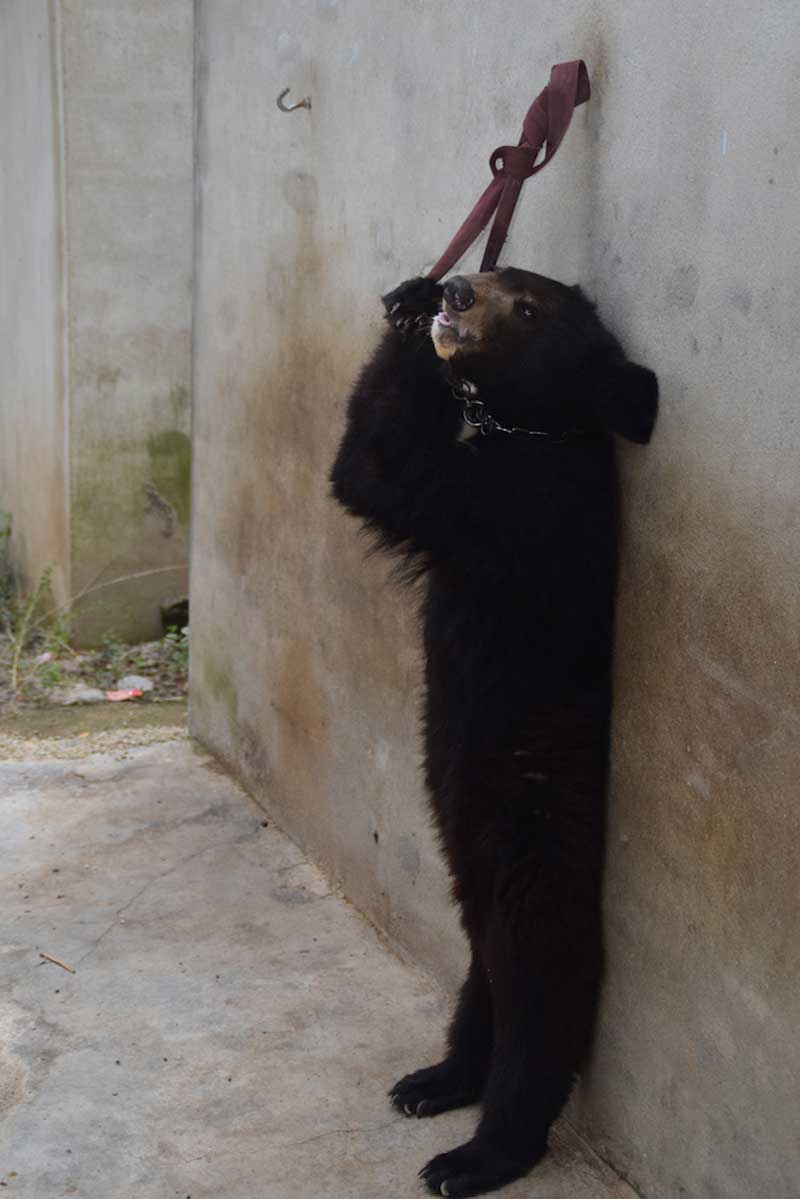
Their spirits were broken. They quickly learned that no matter how tired and scared they felt, they had to stand or they could choke or hang themselves.
Trainers even tethered some bears upright inside cages.
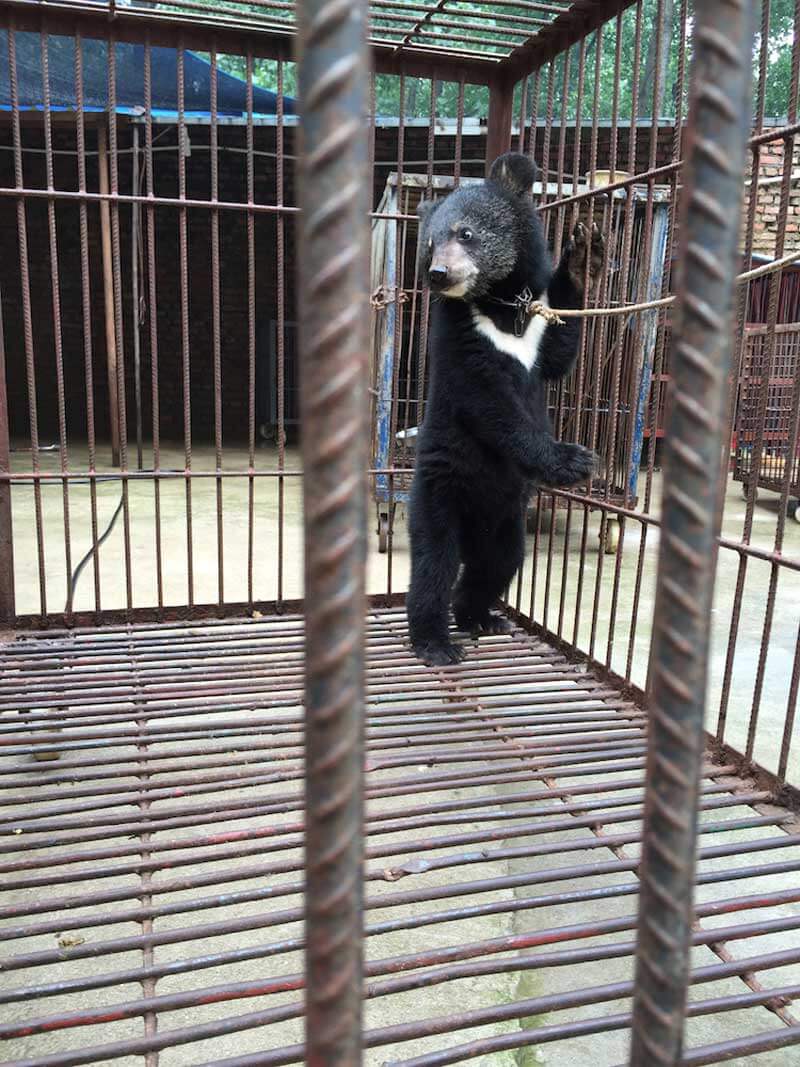
These young bears reached for each other in what appeared to be an attempt to comfort one another.

“Over the long term that causes permanent joint damage or even necrosis and paralysis. … [T]he animals often acquire these problems in their youth, meaning they suffer for the rest of their lives.”
—Jin Yipeng, deputy professor of veterinary medicine at China Agricultural University
Workers tethered some bear cubs by a short rope to a hook in the ground, making it impossible to move more than a few inches in any direction.
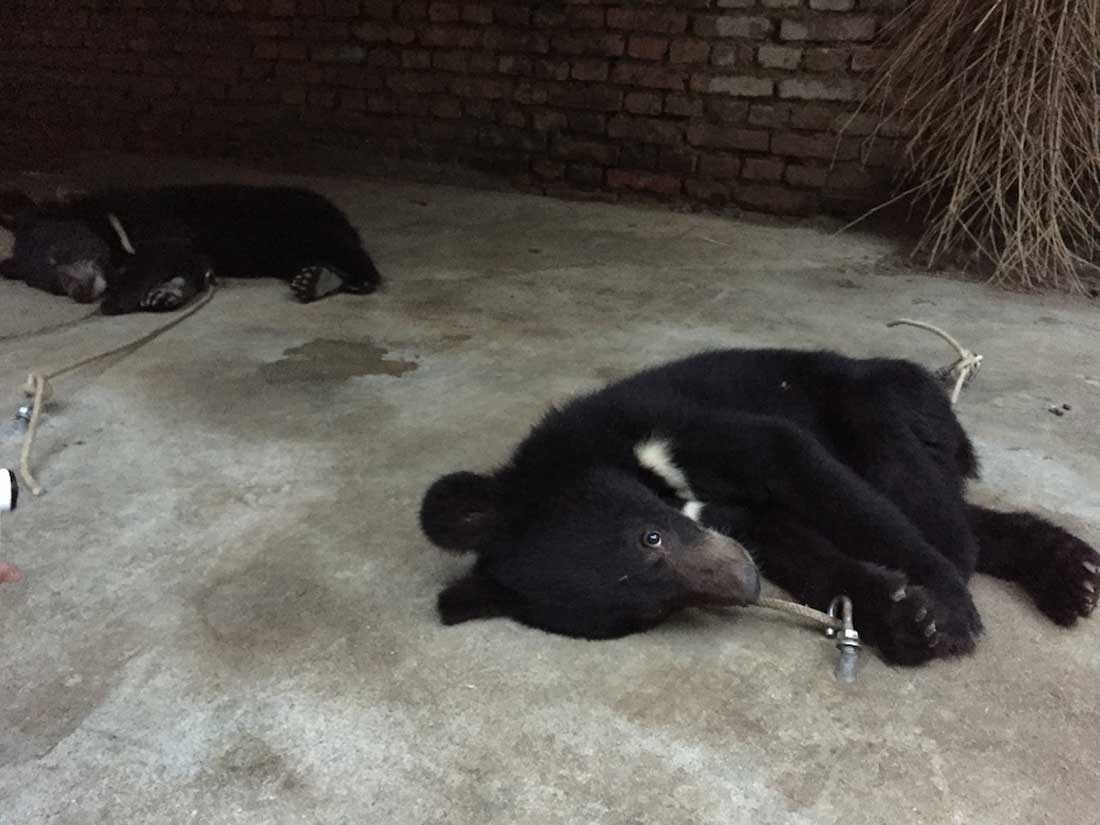
Trainers also forced bears to jump over objects, walk on their hands, and perform other confusing tricks.
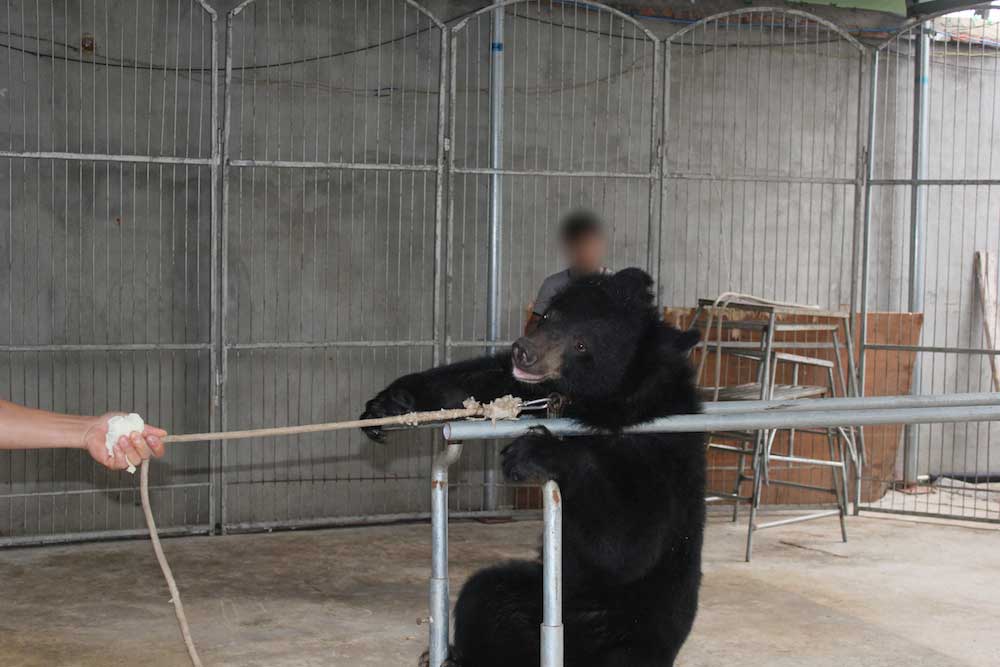
The bears repeatedly resisted, but trainers yanked on their neck ropes, dragged them, grabbed them by the fur on their backs, yelled at them, and forced them to continue. If they made a mistake, they were hit with a stick.
Workers pierced the snouts of some of the bears with metal rings, often without painkillers—then tied ropes to the rings to lead the animals around.
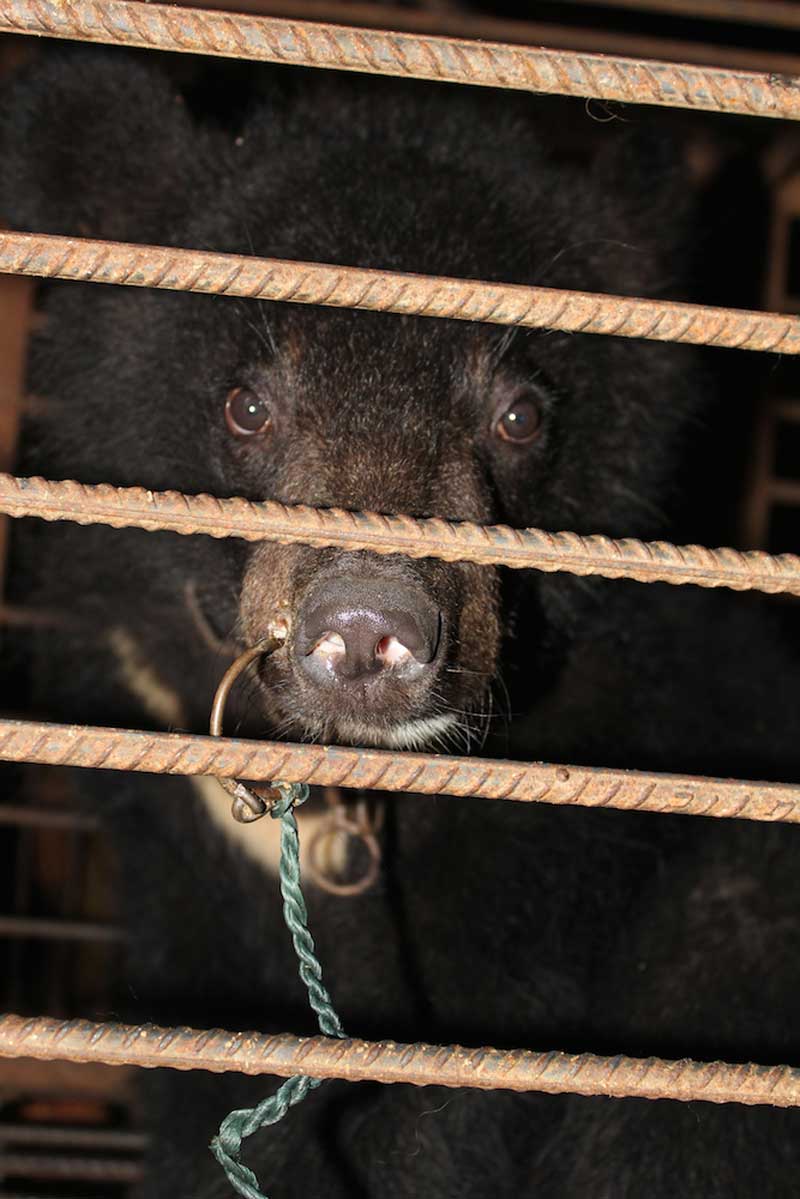
When bears weren’t forced to perform, trainers crammed them into barren metal cages.
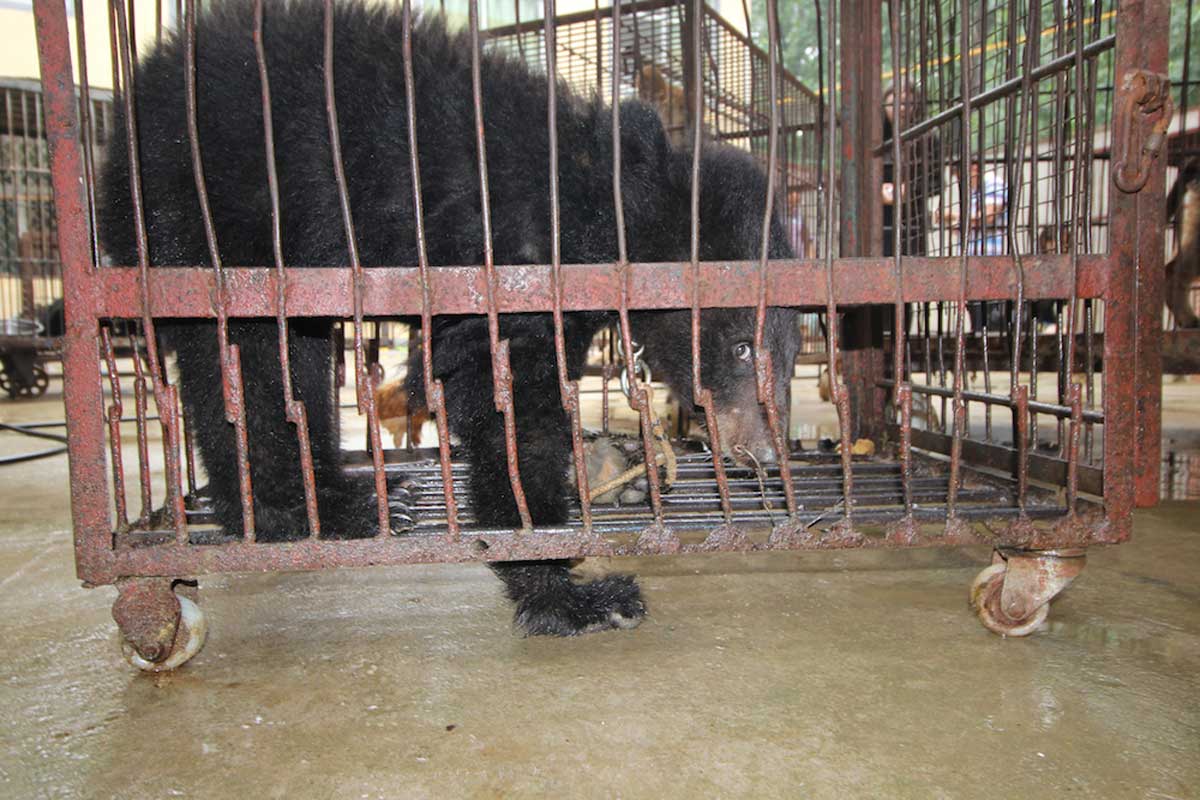
They cried out, pawing and biting at the bars, desperate to escape.
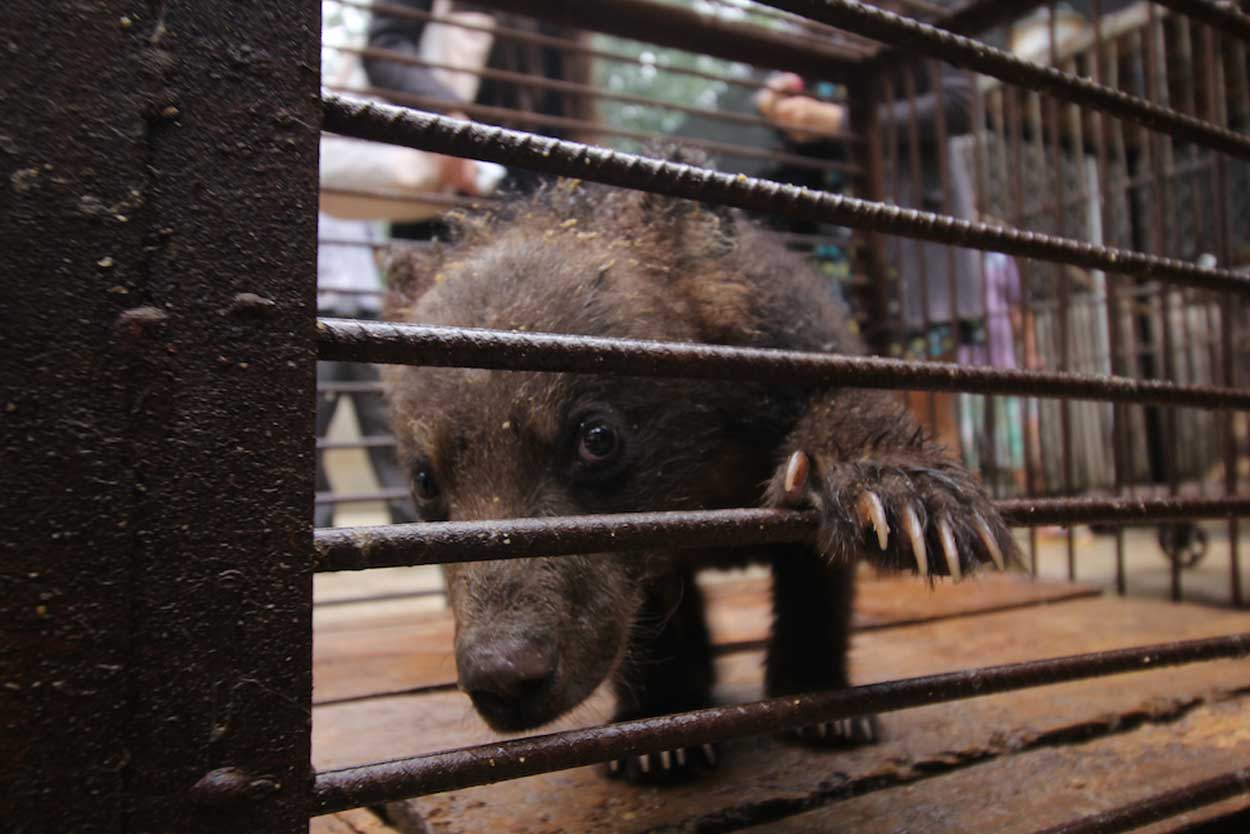
How You Can Help Bears Forced to Perform
No bear—or any other animal—should be exploited for entertainment. Don’t support this cruel industry. Pledge to help bears and other animals today:

